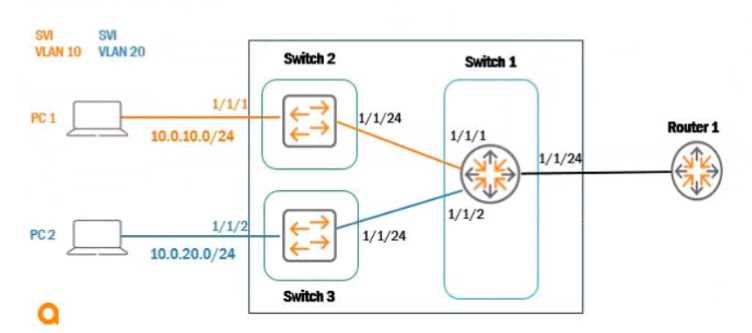
Based on the given topology, what is the requirement on an Aruba switch to enable LLDP messages to be received by Switch 1 port 1/1/24. when Router 1 is enabled with LLDP?
- LLDP is enabled by default
- global configuration lldp enable
- int 1/1/24, lldp receive
- int 1/1/24, no cdp
Answer(s): A
Explanation:
On Aruba switches, the Link Layer Discovery Protocol (LLDP) is enabled by default on all ports. This protocol is an industry-standard network discovery protocol that is used for network devices to advertise their identity, capabilities, and neighbors on a locally managed network, typical in an IEEE 802 network. This is beneficial for network mapping and troubleshooting purposes. Since LLDP is enabled by default, there is no need for any additional configuration on Switch 1 port 1/1/24 to receive LLDP messages from Router 1, as long as LLDP is not disabled on the port.